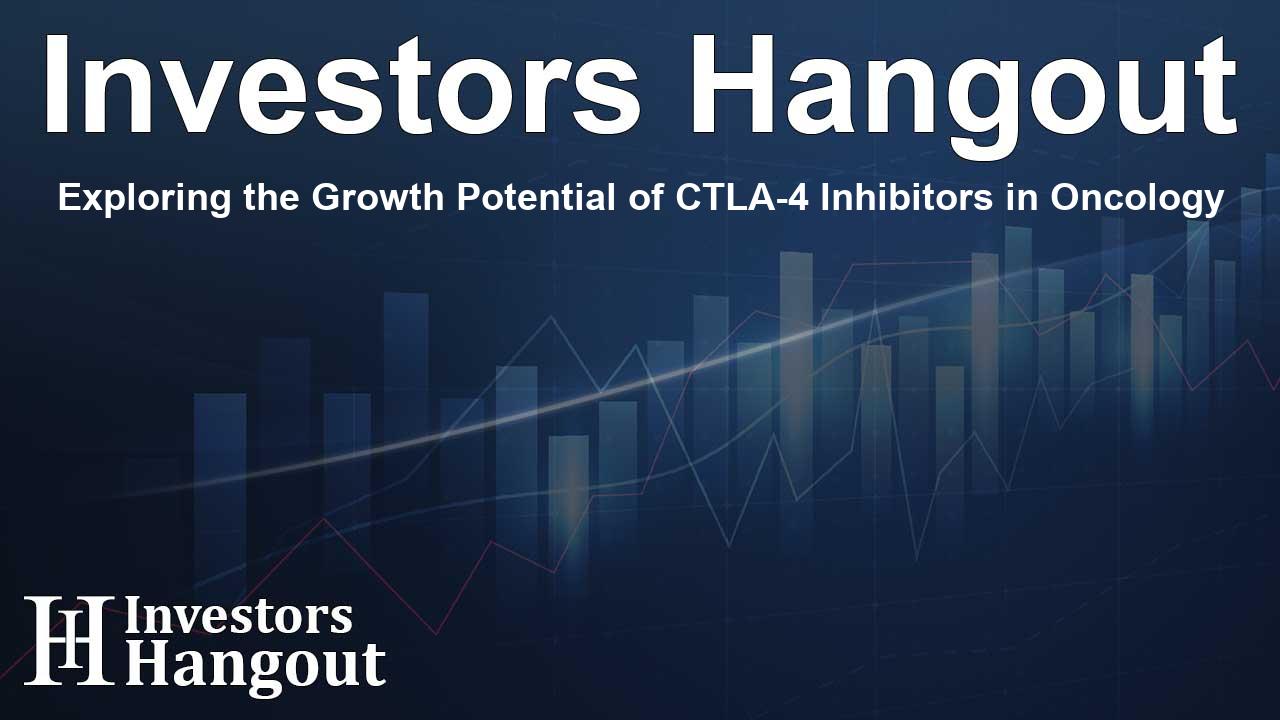Exploring the Growth Potential of CTLA-4 Inhibitors in Oncology

Understanding the CTLA-4 Inhibitors Market
CTLA-4 inhibitors play a pivotal role in the evolution of cancer therapies, significantly influencing treatment protocols in oncology. These inhibitors are widely recognized for their effectiveness in cancer care, resulting in anticipated substantial market growth driven by numerous factors, including label expansions and extensive clinical trials for more effective CTLA-4 inhibitors.
Key Insights into Market Dynamics
The CTLA-4 inhibitors market is expected to experience notable growth as various factors contribute to increasing demand. Notably, the compound YERVOY has garnered notable attention after recording over USD 2 billion in global sales, bolstering the market. Alongside YERVOY, therapies like IMJUDO have also made substantial sales, indicating a thriving landscape for CTLA-4 therapies.
Combination Therapies Fueling Growth
One significant advancement in this field is the rise of combination therapies where CTLA-4 inhibitors are paired with other immune checkpoint inhibitors such as PD-1/PD-L1 agents. For example, the combination of YERVOY with OPDIVO has received approval for multiple indications in the first-line treatment of various cancers, including melanoma and renal cell carcinoma. The promising outcomes from these combinations continue to encourage further explorations and patient inclusivity in clinical trials.
Current and Future Pipeline of CTLA-4 Inhibitors
As the demand for innovative treatment solutions grows, emerging companies, including Merck and BioNTech, are currently developing novel CTLA-4 inhibitors. Research is ongoing to enhance the efficacy and safety of these medications. Notable candidates in the pipeline include Quavonlimab (MK-1308), ONC-392, and BA3071, among others. These advancements indicate a vibrant landscape filled with opportunities for both established and emerging pharmaceutical companies.
Challenges in Market Penetration
While the prospects for CTLA-4 inhibitors appear robust, several challenges could impact market penetration. High treatment costs and the potential for immune-related adverse events such as colitis and dermatitis necessitate a cautious approach among healthcare providers. The pharmaceutical industry is actively engaged in ongoing research to optimize treatment protocols and find predictive biomarkers that can identify which patients would most benefit from CTLA-4 inhibitors, ultimately ensuring safe and effective usage.
The Competitive Landscape
The competitive arena for CTLA-4 inhibitors is heating up as numerous players join the market, aiming to challenge the established dominance of Bristol Myers Squibb. The introduction of newer agents and biosimilars shows a promise of shifting market dynamics. The evolution of innovative designs in drug delivery systems and combinations could further solidify this market's promising future.
Addressing the Unmet Needs in Oncology
Advances in research, continuous clinical trials, and ongoing regulatory approvals play an integral role in the CTLA-4 inhibitors market growth. The burgeoning need for effective treatments in aggressive cancer profiles propels this market forward. Successful addressing of these urgent medical needs will drive both further research and investment, creating new opportunities for pharmaceutical innovation.
Future Outlook for CTLA-4 Inhibitors
Current evidence suggests that as the global burden of cancer escalates, the indispensable role of immunotherapy becomes increasingly clear. In this context, the prognosis for CTLA-4 inhibitors looks exceptionally bright. Anticipated regulatory approvals and increasing patient enrollment in clinical studies could ensure continuous market expansion.
Frequently Asked Questions
What are CTLA-4 inhibitors, and why are they important?
CTLA-4 inhibitors are immune checkpoint inhibitors that enhance the immune system's ability to combat cancer by blocking specific proteins that suppress T cell activity.
How do CTLA-4 inhibitors work in cancer therapy?
By inhibiting the proteins linked to CTLA-4, these drugs promote increased T cell activation, enabling the immune system to recognize and destroy tumor cells more effectively.
What factors are driving the growth of the CTLA-4 inhibitors market?
The market growth is spurred by increased incidences of cancers, advancements in combination therapies, and ongoing innovations in drug development aimed at maximizing treatment efficacy.
What challenges do CTLA-4 inhibitors face in clinical settings?
Challenges include the cost of treatments, potential side effects associated with their use, and the need for research to optimize dosage and treatment regimens.
Which companies are leading developments in the CTLA-4 inhibitors space?
Leading companies such as Bristol Myers Squibb, Merck, and BioNTech are significant players in the development and commercialization of CTLA-4 inhibitors.
About Investors Hangout
Investors Hangout is a leading online stock forum for financial discussion and learning, offering a wide range of free tools and resources. It draws in traders of all levels, who exchange market knowledge, investigate trading tactics, and keep an eye on industry developments in real time. Featuring financial articles, stock message boards, quotes, charts, company profiles, and live news updates. Through cooperative learning and a wealth of informational resources, it helps users from novices creating their first portfolios to experts honing their techniques. Join Investors Hangout today: https://investorshangout.com/
Disclaimer: The content of this article is solely for general informational purposes only; it does not represent legal, financial, or investment advice. Investors Hangout does not offer financial advice; the author is not a licensed financial advisor. Consult a qualified advisor before making any financial or investment decisions based on this article. The author's interpretation of publicly available data shapes the opinions presented here; as a result, they should not be taken as advice to purchase, sell, or hold any securities mentioned or any other investments. The author does not guarantee the accuracy, completeness, or timeliness of any material, providing it "as is." Information and market conditions may change; past performance is not indicative of future outcomes. If any of the material offered here is inaccurate, please contact us for corrections.